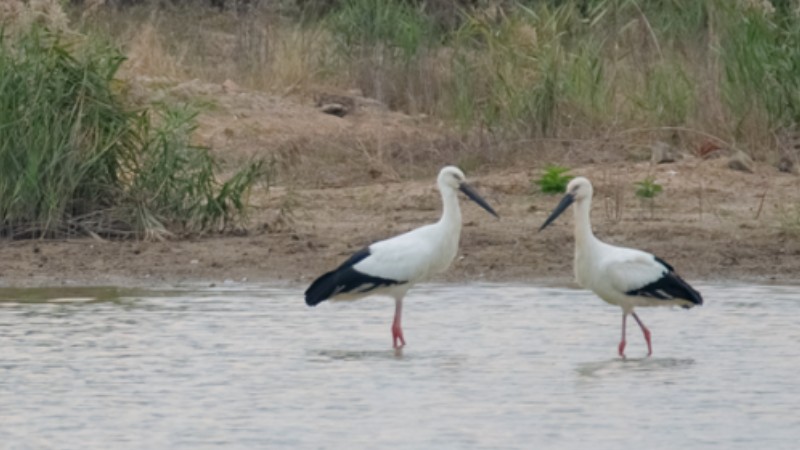2023 in review: A fruitful year for China's manned space program
It has been a busy year for China's manned space program. In 2023, the country welcomed the return of its Shenzhou-15 crew, sent two manned spaceships and one cargo spacecraft to its space station and harvested fruitful scientific research results in the space.
As 2023 draws to a close, let's look back at the memorable moments of China's manned space program during the year.
The launch of the Tianzhou-6 cargo spacecraft
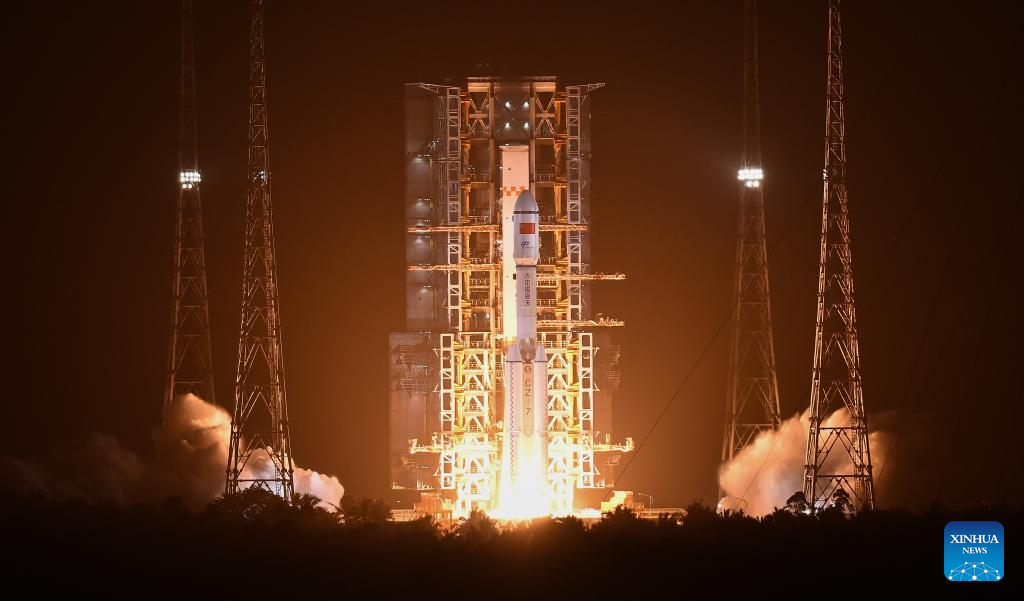
A Long March-7 Y7 rocket carrying the Tianzhou-6 cargo craft blasts off from the Wenchang Spacecraft Launch Site in south China's Hainan Province, May 10, 2023. (Xinhua/Yang Guanyu)
China launched the Tianzhou-6 cargo spacecraft on May 10, which later docked with its space station.
The primary purpose of the Tianzhou-6 was to deliver essential supplies and spacesuits to the Shenzhou-15 crew, which arrived at the space station in November 2022. The cargo craft also transported maintenance components, application facilities and propellant to support the operation of the space station.
Its successor, the Tianzhou-7 cargo craft, is scheduled to be launched in early 2024 to deliver supplies for the astronauts.
The return of the Shenzhou-15 crew
On November 29, 2022, China launched the Shenzhou-15 manned mission, which wrapped up the last stage of the construction of its space station. Since then, the China Space Station (CSS) entered a new phase of application and development, which will span more than 10 years.
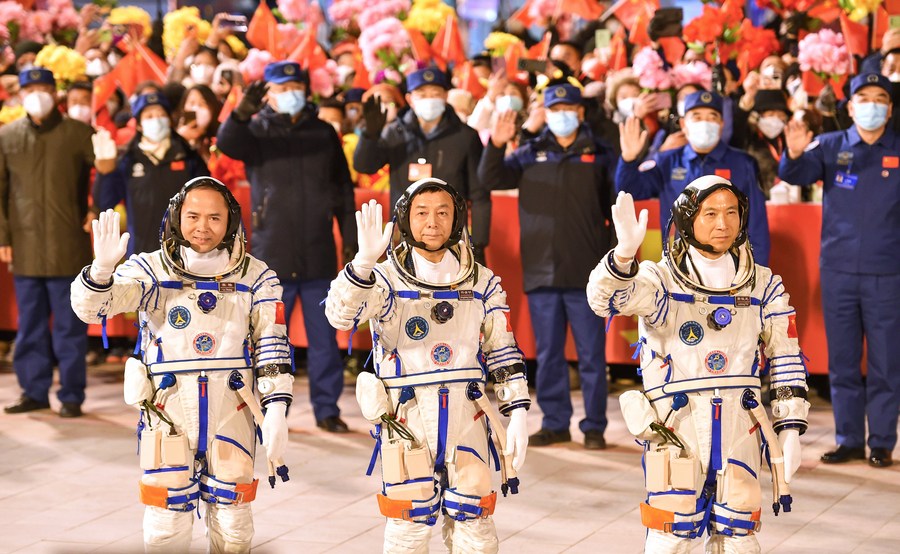
A see-off ceremony for three taikonauts of the Shenzhou-15 manned space mission is held at the Jiuquan Satellite Launch Center in northwest China, Nov. 29, 2022.(Xinhua/Liu Lei)
After an over 180-day stay in the CSS, the re-entry capsule with the Shenzhou-15 crew members Fei Junlong, Deng Qingming and Zhang Lu aboard touched down at the Dongfeng landing site in north China's Inner Mongolia Autonomous Region on June 4.
During their stay, the three Chinese astronauts, or taikonauts, accomplished four extravehicular activities, setting a new record for Chinese astronaut crews in spacewalks. They also conducted a series of scientific experiments and tests, including installing an extravehicular extension pump set and a cross-cabin cable installation and connection.
The Shenzhou-15 crew not only achieved a milestone in extravehicular activities but also witnessed the historic moment when the CSS was fully completed in 2022.
The CSS welcomes the Shenzhou-16 crew
The Shenzhou-16 manned spacecraft embarked on its journey to the CSS on May 30. It is the first manned mission since the space station entered its application and development phase.
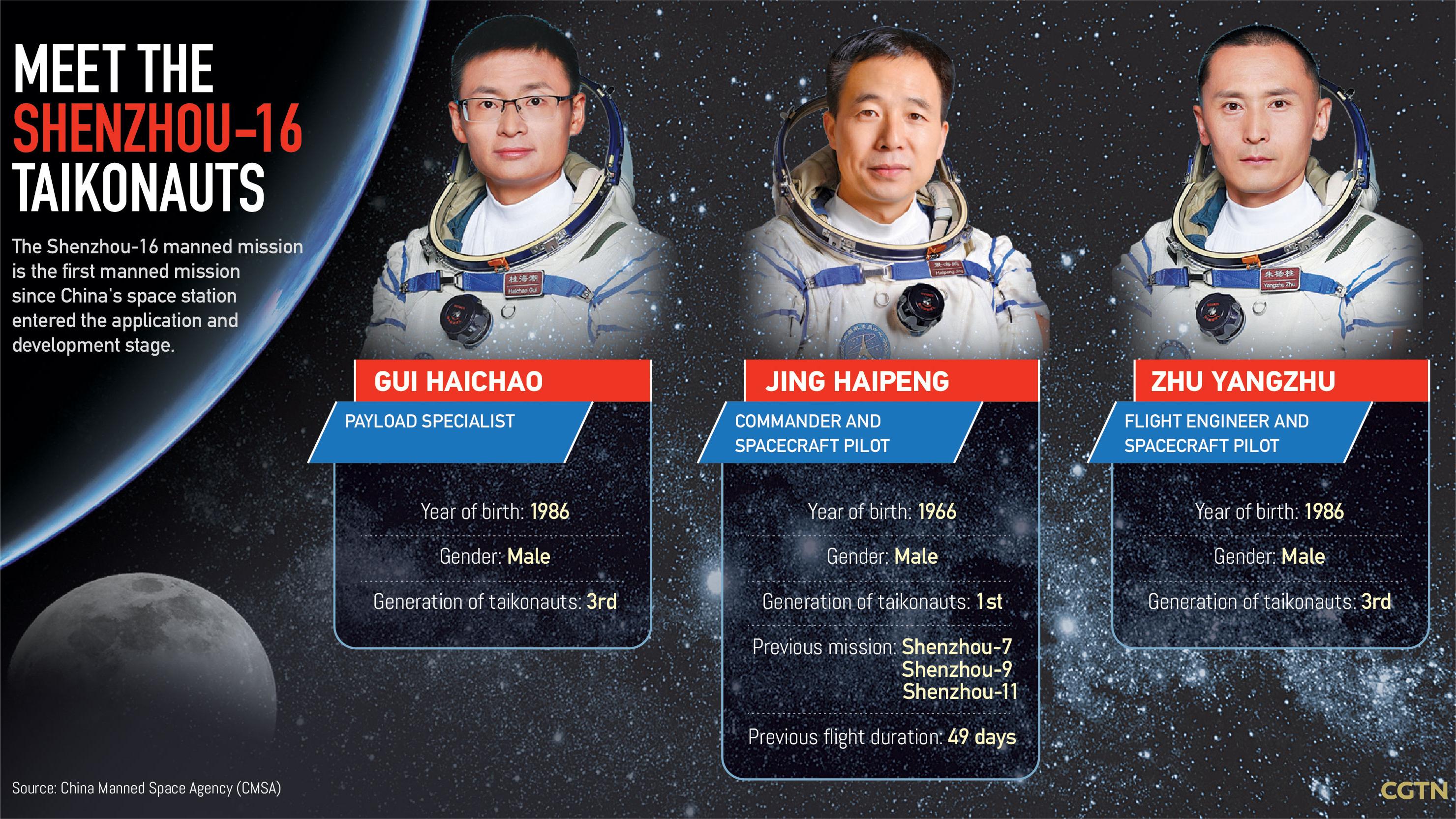
CGTN infographic
The Shenzhou-16 crew consisted of mission commander Jing Haipeng, spaceflight engineer Zhu Yangzhu and payload expert Gui Haichao. Gui became the first Chinese civilian in space, the first payload specialist to go to the CSS and the first taikonaut wearing glasses.
The crew returned to Earth after a five-month stay at the space station. The three taikonauts completed a series of tasks during their trip, including an extravehicular activity, a science lecture titled "Tiangong Class" and multiple extravehicular installation tasks. Closely cooperating with the ground crew, the Shenzhou-16 crew also carried out a slew of space science tests and experiments concerning human factors engineering, space medicine, life ecology, biotechnology, materials science, fluid physics and astronautical technology.
On their way back, the crew captured the first images of the complete configuration of the CSS with Earth in the backdrop.
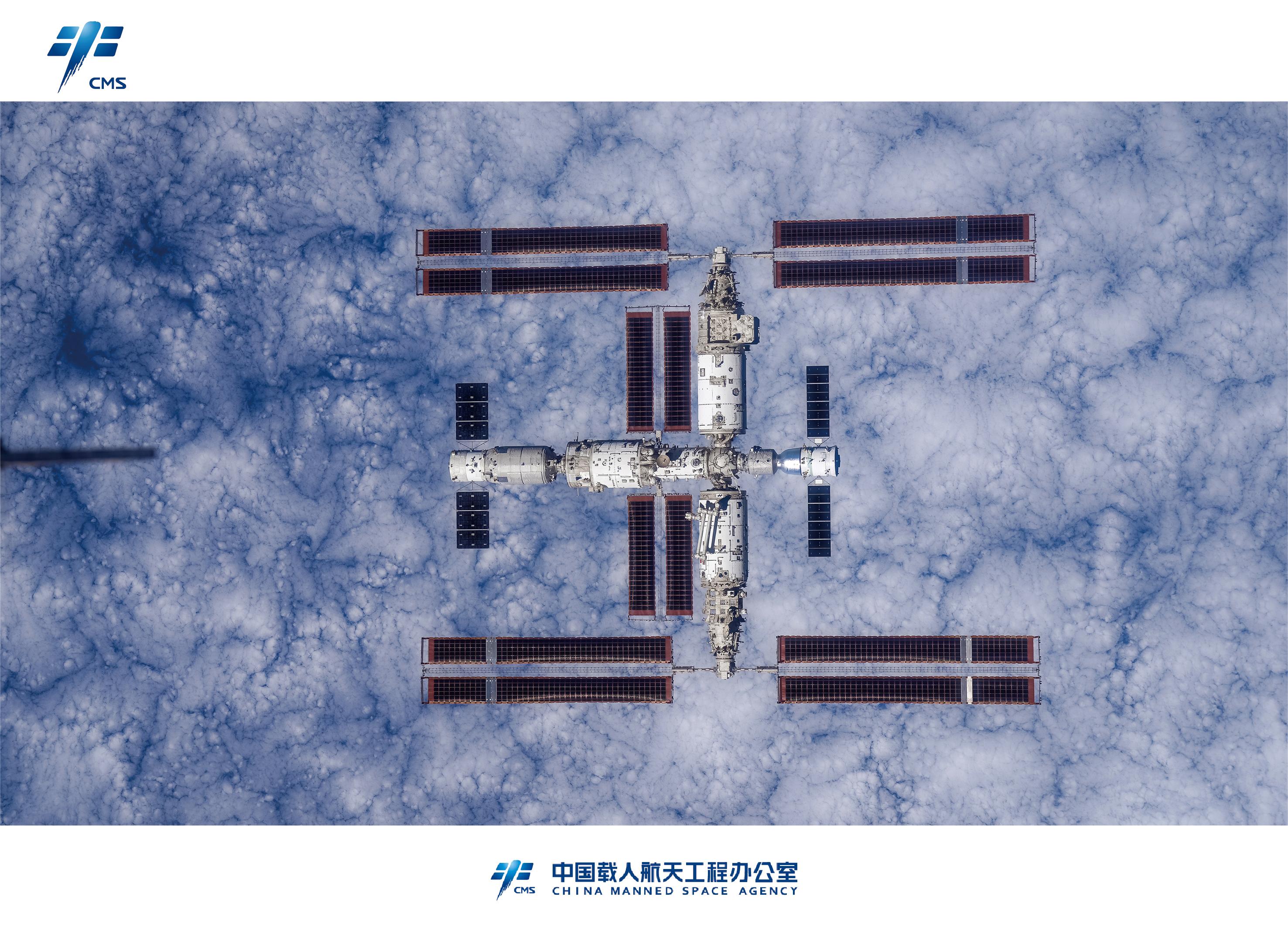
A picture of China Space Station captured by the Shenzhou-16 crew. /China Manned Space Agency
The Shenzhou-17 taikonauts join their colleagues in space
The Shenzhou-17 taikonauts arrived at the space station on October 26, just a few days before the return of the Shenzhou-16 crew on October 31.
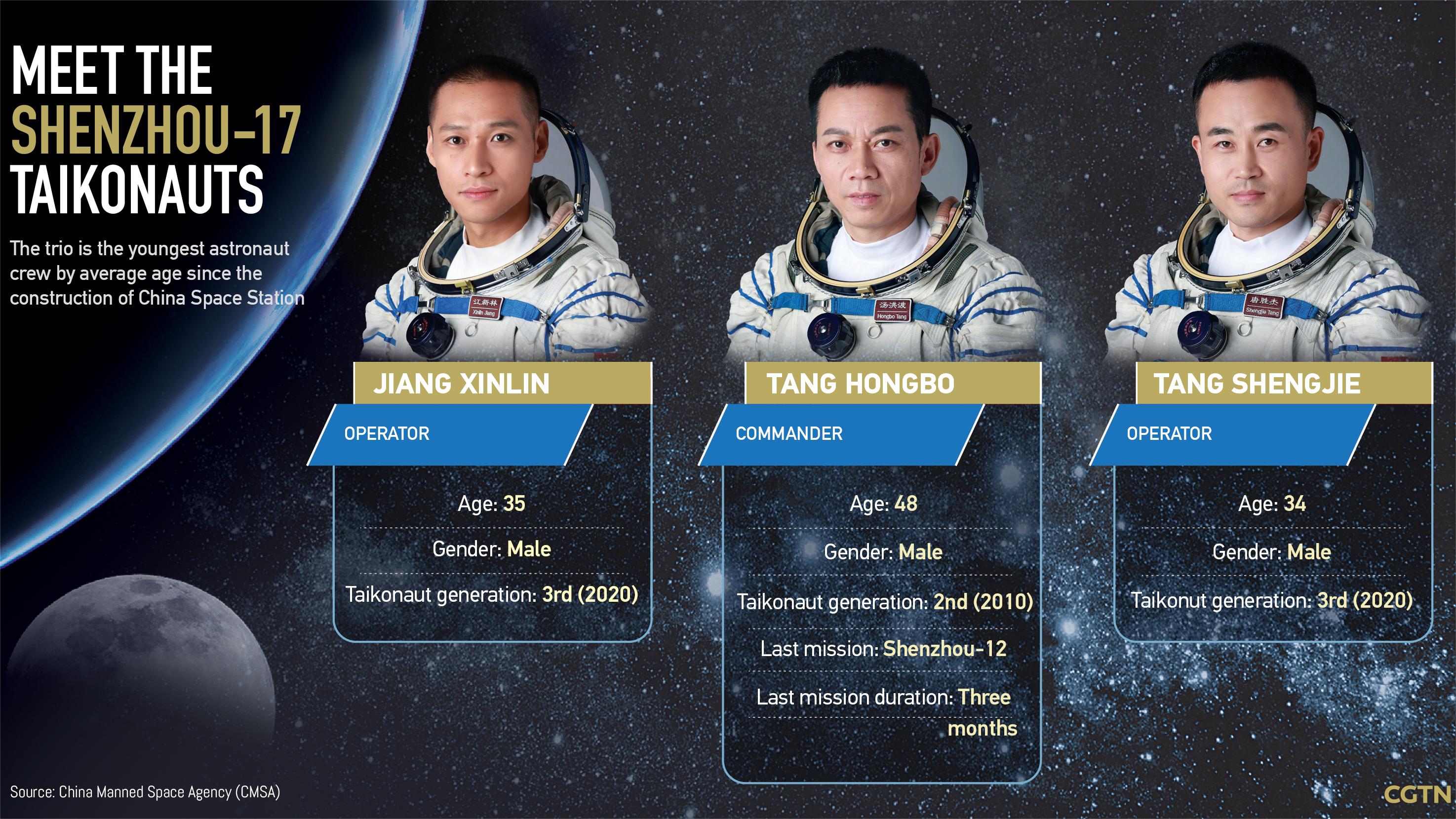
CGTN infographic
The Shenzhou-17 crew, the country's youngest lineup by average age since the CSS's construction began, comprises commander Tang Hongbo, 48, and operators Tang Shengjie and Jiang Xinlin, aged 34 and 35, respectively.
The Shenzhou-17 crew will undertake a series of tasks, including in-orbit tests of space science and application payloads, extravehicular activities, installation of extravehicular payloads, and space station maintenance.
What to expect for 2024
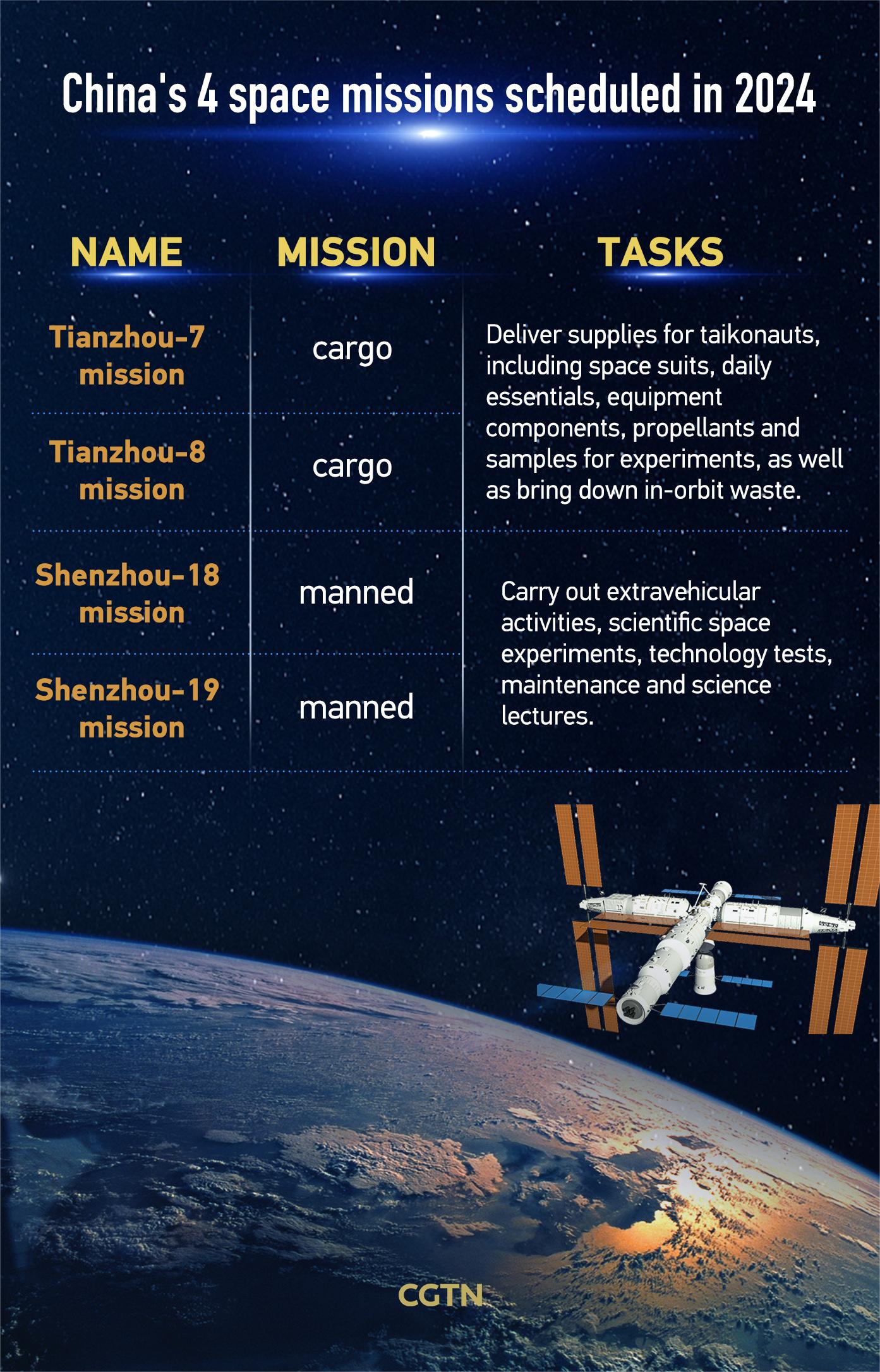
CGTN infographic
China has scheduled four missions to its space station in 2024, including two cargo spacecraft, the Tianzhou-7 and the Tianzhou-8, and two manned missions, the Shenzhou-18 and the Shenzhou-19, according to the China Manned Space Agency.
Let's look forward to hearing more from China's space station in the coming year!
Photos
Related Stories
- Accelerating pace of China's commercial space industry development
- Global experts obtain maturity index of Chang'e-5 lunar soil
- First reusable launch vehicle test flight completed, marking milestone for China's space industry
- China launches reusable test spacecraft
- Chinese scientists build largest-ever neutral hydrogen catalog in deep space
- China firmly opposes arms race in outer space: defense spokeperson
Copyright © 2023 People's Daily Online. All Rights Reserved.









